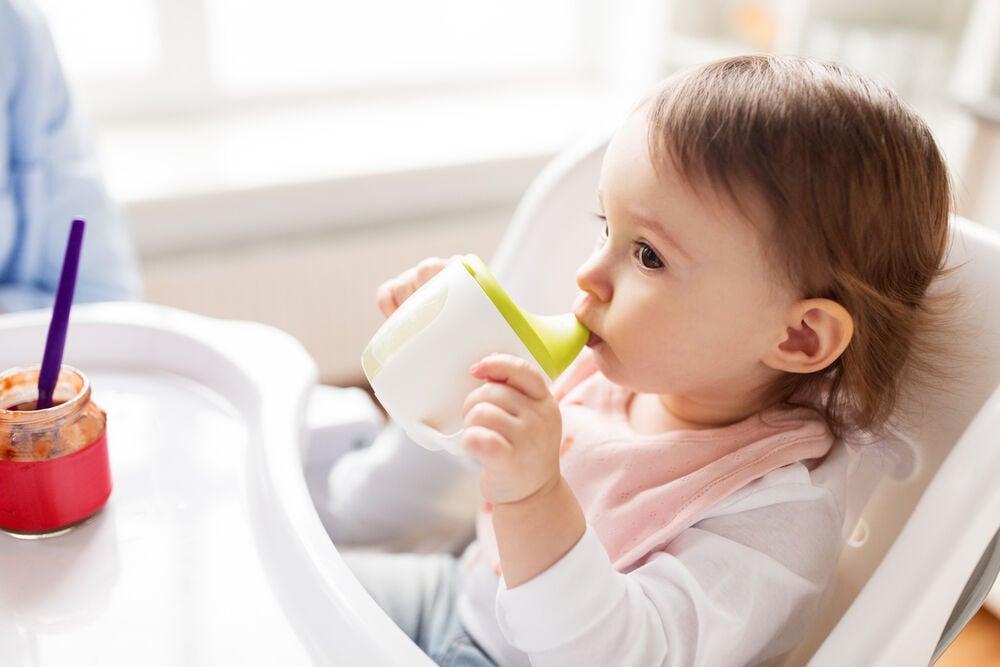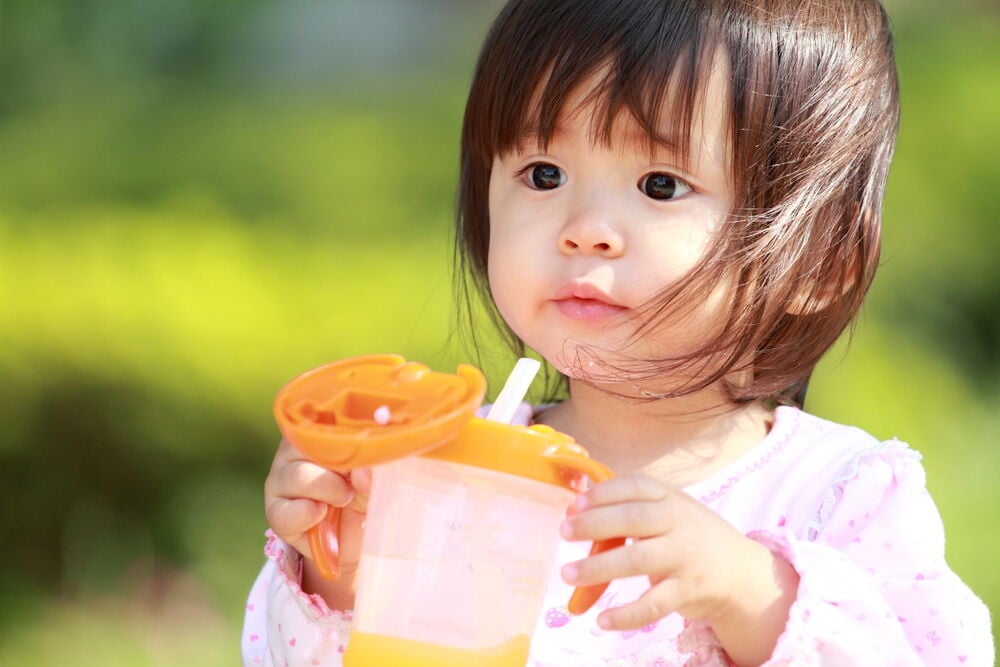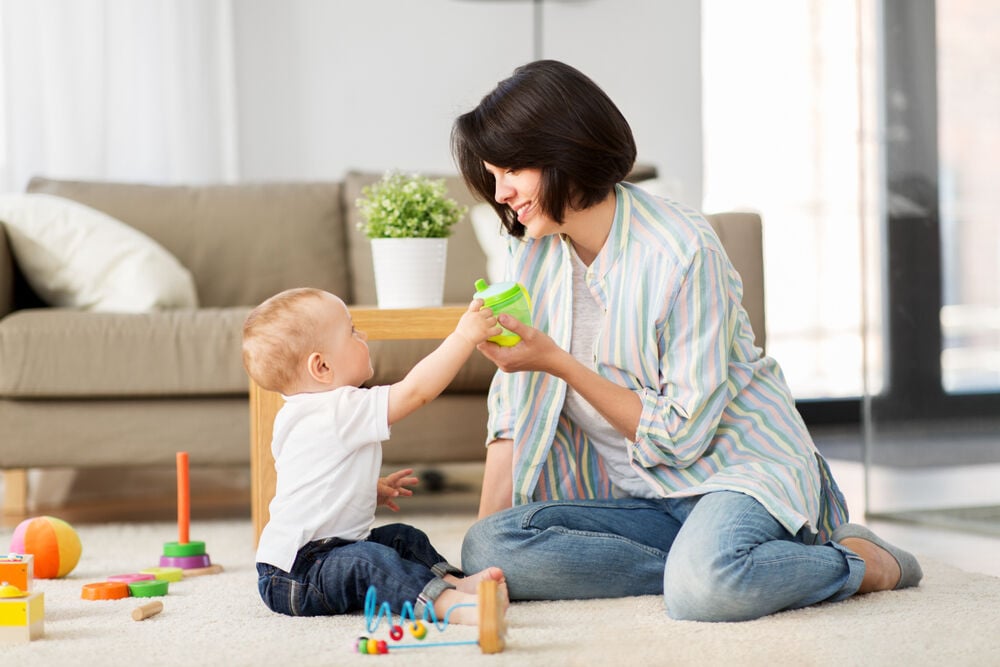-
Tracking cycle
-
Getting pregnant
-
Pregnancy
-
Help Center
-
Flo for Partners
-
Anonymous Mode
-
Flo app reviews
-
Flo Premium New
-
Secret Chats New
-
Symptom Checker New
-
Your cycle
-
Health 360°
-
Getting pregnant
-
Pregnancy
-
Being a mom
-
LGBTQ+
-
Quizzes
-
Ovulation calculator
-
hCG calculator
-
Pregnancy test calculator
-
Menstrual cycle calculator
-
Period calculator
-
Implantation calculator
-
Pregnancy weeks to months calculator
-
Pregnancy due date calculator
-
IVF and FET due date calculator
-
Due date calculator by ultrasound
-
Medical Affairs
-
Science & Research
-
Pass It On Project New
-
Privacy Portal
-
Press Center
-
Flo Accuracy
-
Careers
-
Contact Us
A Parent’s Guide to Baby Sippy Cups


Every piece of content at Flo Health adheres to the highest editorial standards for language, style, and medical accuracy. To learn what we do to deliver the best health and lifestyle insights to you, check out our content review principles.
Types of sippy cups
Just as you were finally mastering the art of breastfeeding, your baby is beginning to show signs of wanting to drink on their own. The baby sippy cup is the first step down that road.
There are hundreds of varieties available, and we’ve highlighted some of the most popular options below.
Standard baby sippy cups

Made with durable plastic or silicone with a sealable lid and a narrow spout, these are like training wheels for a thirsty baby. They ease their eventual transition to the regular cups used by adults.
Some baby sippy cups have handles, while others feature textured grip patterns. For your baby’s first sippy cup, choose a soft mouthpiece that’ll be gentle on their teeth and gums as they develop better cup-to-mouth coordination.
Baby sippy cups with straws

Take a quiz
Find out what you can do with our Health Assistant
This type requires more dexterity and effort, but they’re great for strengthening your baby’s mouth and jaw. Tooth damage also becomes less likely, and research shows it may even aid in speech development. Baby sippy cups with straws are a smart choice for infants who are nine months and older.
Sippy cups for breastfed babies
Breastfed children may take longer to transition to a baby sippy cup than bottle-fed children. The best sippy cup for a breastfed baby has a spout which closely mimics the nipple. If you purchase a customizable model with multiple spouts or lids, you can gradually introduce a narrower or firmer mouthpiece, before replacing with a straw.
Sippy cups for babies who refuse the bottle
While there’s no one-size-fits-all approach in this case, there are a few things you can try.
- Look for a spout that’s soft or resembles a nipple, then give it to your baby when they’re full and in a good mood.
- When you’re introducing a sippy cup for the first time, fill it with breast milk to give them a comforting sense of familiarity.
- Opt for an attractive, brightly colored cup which might be more appealing to your little one.
Baby sippy cups not only allow them to explore their independence and improve their motor skills, but they also give you a break from breastfeeding. It’s especially handy during the weaning process, or if you’re taking cold medication or antibiotics.
When can a baby use a sippy cup?
It’s safe to start presenting sippy cups to your baby at roughly six months of age, as long as they’re:
- Sitting upright on their own
- Holding their head up, unassisted
- Swallowing comfortably with a decreased tongue protrusion reflex
- Demonstrating hand-to-mouth coordination
Since baby sippy cups are meant to be a transitional tool, try switching to regular cups after a few months of successful sippy cup usage.
When to give baby water in a sippy cup

Breast milk or formula are the ideal drinks to offer your baby in a sippy cup early on. The amount of water they need, however, will depend on the foods they’re eating, so speak with your pediatrician first.
Note that you should never give an infant younger than six months of age any water or juice. Water fills them up, and juice contains empty calories and excess sugar which may cause diarrhea. Between 9 and 12 months, your baby will require no more than two to four ounces of water per day if they’re still on breast milk or formula.
After the first year, as your baby eats more solids and becomes more active, they can drink up to 16 ounces of water per day. But don’t let your child drink too much during mealtime so that they’ll still have room for food.
How to teach baby to use a sippy cup
Follow the simple steps below for teaching your baby how to use sippy cups.
- Get a spill-proof cup that’s visually appealing with soft hand and mouth grips. Fill it with just an ounce or two of breast milk so it isn’t too heavy.
- Wait for them to reach for the cup, rather than forcing it towards their mouth or hands.
- Let your baby hold the cup in different positions and directions. Then, gently place their hands in the correct spot, with the spout pointing towards their mouth.
- Bring the mouthpiece towards their mouth and slowly tilt upwards. Demonstrate the action of tipping the cup to their mouth so they can copy you.
- Celebrate your baby’s first sips with words of encouragement and applause!
- Remember, it may take time for your baby to understand the mechanics of bringing the cup to their mouth. Be patient and open to trying different types of baby sippy cups, if needed.
It’s important to note that a baby sippy cup is not a bottle and it’s not a soother. It’s meant to be used only when your baby is thirsty and needs to learn how to drink on their own.
Sippy cup safety tips
Although it might make your life a lot easier, using a sippy cup sometimes creates its own set of problems. As your baby gains independence, you’ll still need to monitor them to ensure their safety. To reduce the chances of illness or injury from a sippy cup, take the proper precautions.
- Clean your baby’s sippy cup thoroughly before each use. They’re often a breeding ground for bacteria and mold, especially if they’re dragged around the house or playground, or used at mealtime. First, remove all attachments. You can either clean it with a bottle brush, or put everything into a warm water and vinegar solution for 30 minutes. This is made from 2 tablespoons of vinegar, or acetic acid, and 1 tablespoon of dish soap. Vinegar is a relatively nontoxic, inexpensive, and widely-available cleanser.
- Limit the amount of time your little one spends with their sippy cup. Overuse promotes cavities, tooth decay, and poor eating habits, especially if they’re drinking anything other than water. Excessive use may even slow speech development.
- Keep a close eye on your child while they’ve got a sippy cup in hand. Drinking while engaged in other activities like running or playing may lead to injury.
Your baby’s sippy cup should really only be filled with breast milk, formula, or water. If you’re going to offer juice, dilute it with water to minimize their consumption of added sugars.
Drinking from a sippy cup is a major milestone in your baby’s development. Some children learn quickly, while others take a bit longer. Be patient, and don’t be afraid to try new products before settling on the right one for your baby. Check out Flo for more great tips on raising a baby.


Hey, I'm Anique
I started using Flo app to track my period and ovulation because we wanted to have a baby.


The Flo app helped me learn about my body and spot ovulation signs during our conception journey.


I vividly
remember the day
that we switched
Flo into
Pregnancy Mode — it was
such a special
moment.
Real stories, real results
Learn how the Flo app became an amazing cheerleader for us on our conception journey.




